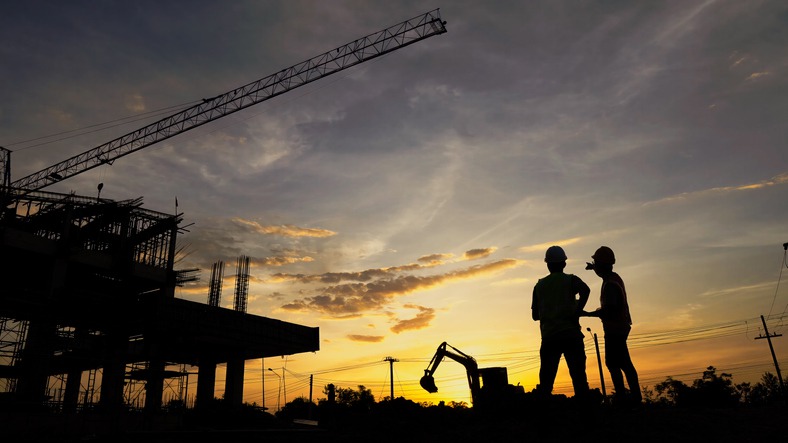In today’s world, buildings aren’t just about providing shelter. They’re investments, spaces of work, and symbols of community. But how do you ensure these structures stand the test of time? Well, it often boils down to the quality of construction services. Let’s explore how construction services can boost the longevity of your building and keep your investment secure.
What Factors Influence the Longevity of Buildings?
Understanding what influences a building’s lifespan is essential for anyone involved in construction or property management. Several factors play a vital role in how long a structure remains functional and safe. Let’s take a look at some key elements that contribute to a building’s longevity.
Selecting Quality Materials
One of the first steps in any construction project is material selection. Using durable and sustainable materials can significantly extend the life of a building.
-
Concrete: Known for its durability and strength.
-
Steel: Offers flexibility and resistance to extreme conditions.
-
Wood: When treated correctly, it’s a sustainable and lasting choice.
Employing Skilled Labor
Even the best materials can’t do their job if they are not handled by skilled professionals. Hiring experienced teams ensures that the construction process is thorough and precise. These experts know how to minimize errors and optimize techniques.
Ensuring Proper Design and Planning
For a building to withstand time, good design and meticulous planning are essential. It involves:
-
Understanding the purpose and scope of the building.
-
Creating designs that prioritize structural integrity and functionality.
-
Anticipating potential challenges and addressing them preemptively.
A thoughtful approach ensures the building meets current needs while being adaptable to future changes. In this context, commercial construction services in Denver, CO play a crucial role, as they emphasize the importance of comprehensive planning to avoid costly alterations down the line.
How Do Maintenance and Upgrades Impact Building Longevity?
Maintaining and upgrading your building is key to keeping it in great shape over time. Regular maintenance addresses potential issues early, while upgrades integrate modern features. Together, they significantly enhance your building’s lifespan and functionality.
Regular Maintenance Checks
Regular maintenance checks are crucial for the longevity of any building. They allow us to identify and address potential issues before they escalate into major problems, saving time and money in the long run. Routine inspections cover various aspects, such as structural integrity, electrical systems, and plumbing, ensuring everything functions smoothly. By staying proactive, we keep the building safe, efficient, and comfortable for its occupants.
Timely Upgrades
Building codes and standards evolve, and integrating modern technologies can enhance a building’s lifespan. Consider these upgrades:
-
Energy-efficient systems: Reduces long-term costs and environmental impact.
-
Safety features: Ensures compliance with the latest regulations.
-
Renovations: Refreshes the space to meet modern demands.
It’s essential to consult with a trusted Denver commercial property management company when thinking about upgrades, as they can provide expert advice tailored to your building’s specific needs.
The Impact of Environmental Factors
Environmental conditions play a significant role in building durability. Weather, natural disasters, and even pollution can affect how long a structure lasts. Let’s discuss how construction services mitigate these factors:
Weatherproofing and Insulation
Ensuring your building can withstand diverse weather conditions is crucial. This includes:
-
Appropriate insulation: Insulation acts as a barrier against temperature changes, keeping your building comfortable. It also minimizes energy costs by regulating heating and cooling needs.
-
Weather-resistant materials: Choosing materials designed to withstand harsh weather conditions reduces the damage from elements like rain and wind. This leads to lower maintenance costs and extends the lifespan of the building.
Structural Reinforcement
For locations prone to natural disasters, reinforcing a building’s structure ensures safety and stability. Techniques include:
-
Deep foundations: These provide stability by anchoring the building securely, reducing the risk of damage during earthquakes. They’re designed to support the building by reaching down to more stable soil layers.
-
Steel reinforcements: Steel adds strength to buildings, helping them withstand the forces of earthquakes or high winds. This reinforcement is especially vital for maintaining structural integrity in challenging environments.
It’s important to address every component of the building to ensure overall resilience. Working with a commercial roofer Denver, CO ensures that the roofing, one of the most vulnerable parts of the building, is robust and can resist environmental challenges.
What Impact Does Technology Have On Prolonging Building Life?
The construction industry is embracing modern technologies to enhance building longevity. Here’s how technology is making a difference:
Building Information Modeling (BIM)
BIM creates detailed 3D models of buildings, making it easier to spot potential issues before construction starts. By using simulations, teams can make necessary adjustments to optimize the design for better longevity. This proactive approach helps in saving time and resources during the actual construction phase.
Smart Building Technologies
Smart technologies enhance building efficiency by monitoring conditions in real-time and automating climate control. They also send alerts for maintenance needs, ensuring problems are addressed swiftly. This proactive system helps prevent damage and extends the building’s lifespan.
Sustainable Practices
Technology enables construction services to adopt more sustainable practices. For instance, recycling materials helps reduce waste and costs, while energy-efficient tools lower the carbon footprint during construction. These practices ensure projects positively impact both the environment and the community.
Final Thoughts
Investing in the longevity of your building is more than just keeping walls standing; it’s about crafting a legacy that serves its purpose for years to come. By focusing on quality materials, skilled labor, and thoughtful design, you build a solid foundation. Prioritizing routine maintenance and timely upgrades keeps the structure vibrant and functional. Embracing technology and sustainable practices further enhances durability and efficiency.
Collaborating with experts who share this vision is key. By integrating these elements, your building becomes a lasting asset that continues to thrive and meet the evolving needs of its occupants.

